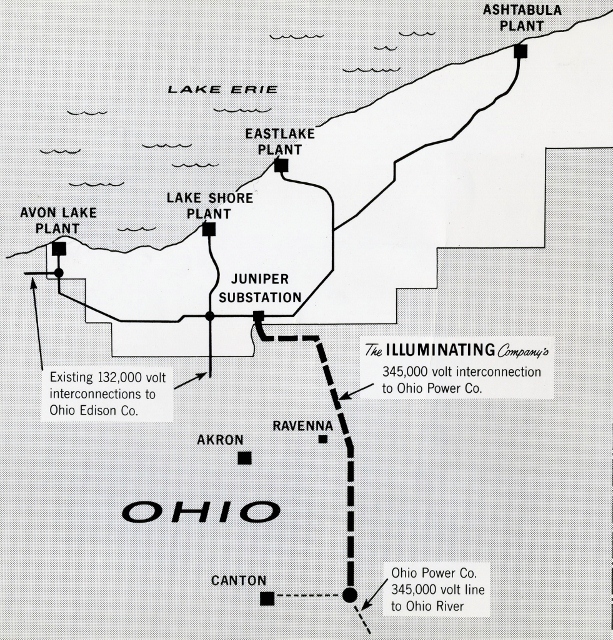Avon Lake Power Plant

With regard to Cleveland's west side, the addition of the Avon Lake Power Plant on Lake Road in 1926 is arguably the most significant project taken on by Cleveland Electric Illuminating Company (CEI). Situated 23 miles west of CEI's Public Square headquarters, the plant added another massive range of power and opened "a new industrial area in which electrical power will be available in abundance." Announced in 1924, the Avon Lake plant was built from March 1925 to July 1926 at a cost of approximately $30,000,000. The plant was constructed in Avon Beach Park in order to make use of the uniquely large, cool source of water in the Great Lakes. Cool water was necessary to condense steam as it left the turbines, and five-hundred tons of water were required for every ton of coal burned by the plant. To put this in perspective, so much water was needed for the Avon Lake plant that it had to pump twice the amount of water that the city water works did. When it opened, the Avon Lake plant became the largest of its kind in the world, capable of producing a magnificent 400,000 horsepower.
The Avon Lake plant's dependence on water led to an extraordinary dilemma on February 21, 1953. That day, "great masses of gizzard shad" collapsed the plant's water intake screens and caused each of the plan'ts seven generators to instantly shut down. This resulted in a significant power-outage throughout the entire Greater Cleveland area. After hours of scooping out the dead fish with a large crane, it took the work of another 50 men, including welders and divers, to fix the broken water intake screens located 35 feet below the surface. The Ohio Division of Wildlife determined that a sudden and significant drop in temperature had killed the fish, which subsequently created a large aggregation of dead fish on the surface near the plant's intake channel.
In addition to cool water, the plant also depended on a substantial amount of coal. In 1950, the Avon Lake plant reportedly processed 4,000 tons of coal a day. Despite a late-fifties effort by CEI to beautify the immediate area surrounding the Avon Lake power plant, significant backlash over the plant's environmental impact eventually led to its demise. In November of 2011, Ohio Representative Dennis Kucinich publicly addressed the Ohio Environmental Protection Agency, (EPA). Kucinich urged the EPA to take action against the plant, now controlled by GenOn, and limit its toxic air pollution. Kucinich cited that the "power plant in Avon Lake had released more than two million [tons] of toxic chemicals in 2010." The EPA determined that the Avon Lake power plant was guilty of excessive ozone emissions, and cited GenOn. In order to become compliant under stricter EPA regulations, the power plant would have to undergo an overhaul costing hundreds of millions of dollars. This pressured GenOn to announce plans to close the Avon Lake power plant in 2015, but instead the plant changed hands and continued to operate for six more years before finally shutting down in 2021. It was mostly demolished over the next two years as part of a lakefront redevelopment plan.
Images







